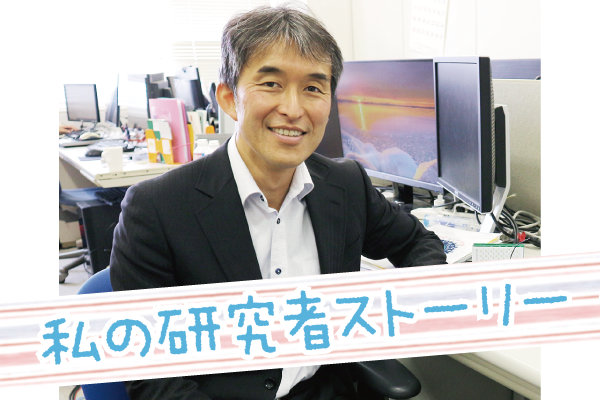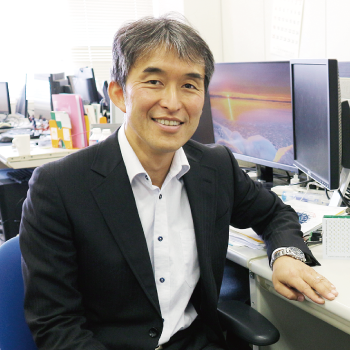- someone
- Information for Middle and High School Researchers
Curiosity Discovers the Possibilities of Electronics
2020.12.02
My Researcher Story 〜The Beginning of Research, the Future of Creation
How did the researchers at the forefront of the field start their research? What kind of research are they doing now? We interviewed Mr. Kumaki, who is active in the College of Science and Engineering at Ritsumeikan University, about his current research and the story leading up to it.
Variations in products and flickering lighting can occur even when the same product is manufactured, and can be a hindrance in photography. Mr. Kumaki takes advantage of these normally troublesome problems and applies them to the development of electronic components for computers and lighting devices.

Department of Electronics and Information Engineering, College of Science and Engineering, Ritsumeikan University
associate professorTakeshi Kumaki three
Curiosity" is a guidepost that determines the course of one's career.
Since he was a child, Kumaki has always had a love of science, enjoying living things and making things, and reading the science magazines his mother bought for him. However, when he was in high school, he was not good at mathematics, and visited his homeroom teacher who was in charge of mathematics every day to ask her questions. His interest in mathematics gradually grew, and his interest in the progress of science and technology, which he felt while reading scientific magazines, and his curiosity to "do something different" led him to enroll in the Department of Mathematical Physics at the National Defense Academy of Japan. After graduation, I joined the Air Self-Defense Force. Although I temporarily left research, as I came into contact with the equipment of the Self-Defense Forces, I became curious about the development side rather than the user side of the equipment, and I took the plunge and entered graduate school. I ended up in research on high-density integrated circuits (LSI), which are the brains of computers, and research and development of applications that apply them.
Variability and noise create the future!
Kumaki's research is characterized by the fact that he takes advantage of phenomena such as product variation and light emission noise, which are often treated as drawbacks. For example, when the same LSI chip is manufactured in a factory, subtle variations in quality are produced. By converting this variation into "individuality" in the form of differences in responses to input information, Mr. Kumaki believes that this will lead to the development of next-generation communication robots with individuality, even if they are the same type, for example.
When photographing LED lights with a smartphone, there is a phenomenon called flicker noise, which causes stripes of light and dark patterns to appear in the image. By controlling this noise, which usually gets in the way, it is possible to project text, video, etc., visible only when the camera is held up to the illumination, which appears to glow evenly, in light or dark, with possible applications in disaster prevention and entertainment. Thanks to Kumaki's curiosity, the variation in quality and video noise may be transformed into a technology that will support future robot development and our daily lives.
You can meet Mr. Kumaki in person!
Dr. Hasegawa and Dr. Kumaki will participate in the Ritsumeikan University session of the Science Castle 2020 Kansai Grand Meeting. Let's meet, talk, and ask questions!
December 20, 2020 15:40-16:40
Session Title:Let's envision your future research life with a researcher!"
